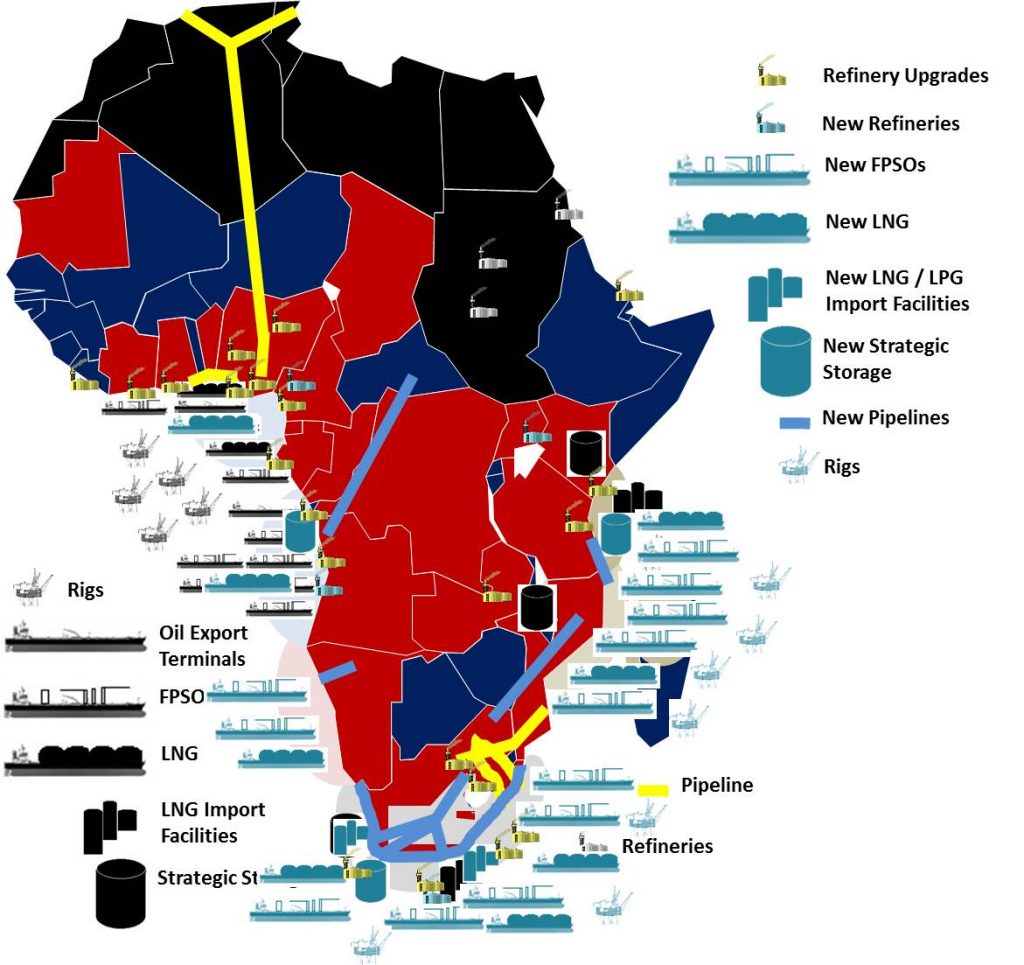
13 November 2017, Sweetcrude, Lagos — While the production of liquefied natural gas (LNG) in Africa historically has been concentrated in Nigeria, Algeria, Egypt, and Libya, the prospects for gas in the rest of Africa have steadily increased in recent years. This development not only has opened the door to opportunities for export but also for supporting the demand for reliable power on the continent, according to Victor Mallet, APR Energy’s Director of Sales for Sub-Saharan Africa.
A report published by Ernst & Young Global Limited highlights that gas consumption in Africa has been increasing at a rate of about 6% per year since the year 2000. Countries like Congo, Mozambique, Rwanda and Sudan have emerged as viable LNG producers. The report, Natural Gas in Africa, also notes that oil’s dominance in West Africa is gradually giving way to gas, while East Africa’s gas sector has progressed from virtually non-existent to the so-called “next epicenter” for gas production in just 10 years.
“One example of LNG’s potential in Africa is in Ghana, where the country’s massive Sankofa development is expected to start producing LNG in 2018 and provide around 2,000MW of generation capacity to Ghana’s power grid,” Mallet says.
“In June, the $7 billion Coral South LNG project in Mozambique, which will produce 3.4-million tonnes of gas per year, was given the green light. Tanzania is on the cusp of realising a $30 billion onshore LNG plant, and Ethiopia and Rwanda have recently announced major gas projects. It also should be noted that most of these countries expect to see increases in electricity demand of 15-30% per year, while others like Rwanda are experiencing significant shortfalls in electricity supply, according to the latest reports,” he adds.
Mallet believes that the installation of mobile gas turbines running on LNG may be one of the quickest and most cost-effective ways for these countries to expand their generating capacity – and to quickly monetise the value of their natural gas. The turbines – which use the same proven technology found in airplane jet engines – offer additional advantages, including significantly lower emissions than the typical diesel reciprocating engines found in the temporary power market, and the flexibility to run on diesel, LPG, and ethanol if there is a hiccup in gas supplies.
Speed, however, is the greatest benefit of fast-track power using mobile gas turbines. “Why wait years for electricity when you can have a reliable power within weeks?” Mallet asks. Fast-track power provides rapid access to reliable electricity – typically within 30-90 days – and it can bridge the gap during the years required to plan, finance and construct permanent generating capacity.
“In countries where construction of permanent generation is delayed due to lack of funding, such as Rwanda, bridging power provided by mobile fast-track power generation can stimulate immediate economic growth, contributing to the country’s GDP and creating revenue to invest in long-term power solutions,” Mallet says.
“Moreover, with fast-track power, there is no large up-front capital investment by the customer,” he adds. “Instead, it is treated as a monthly operating expense that includes a fixed cost for access to the generating capacity and a variable cost for the power consumed.”
APR Energy is the world’s leading provider of fast-track mobile turbine power. The company’s fast, flexible and full-service power solutions provide customers with rapid access to reliable electricity when and where they need it, for as long as they need it.
“Combining state-of-the-art, fuel-efficient technology with industry-leading expertise, APR Energy’s scalable turnkey plants have provided power to more than 40 million people, helping to run cities, countries, and industries around the world, in both developed and developing markets,” Mallet concludes



